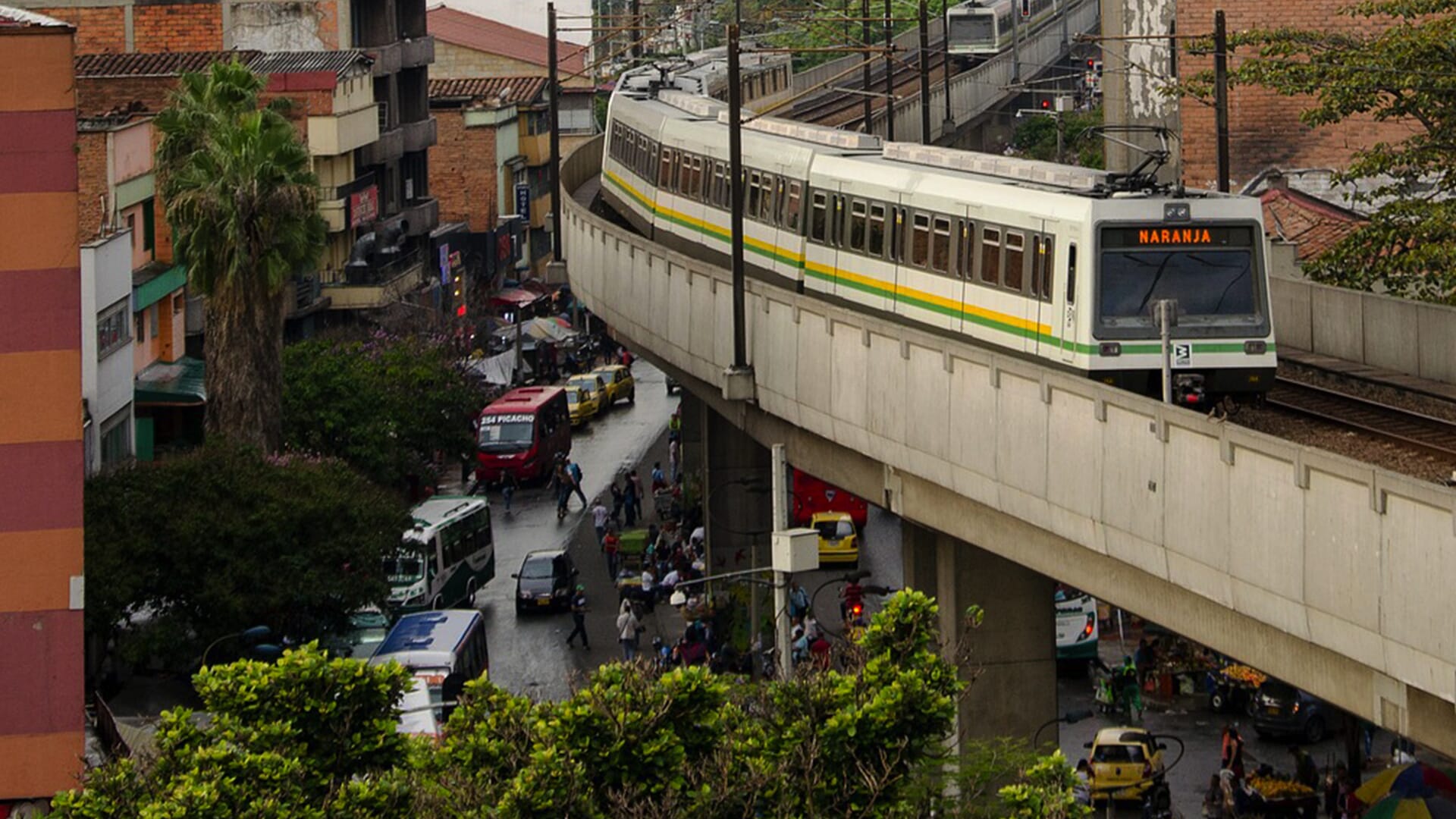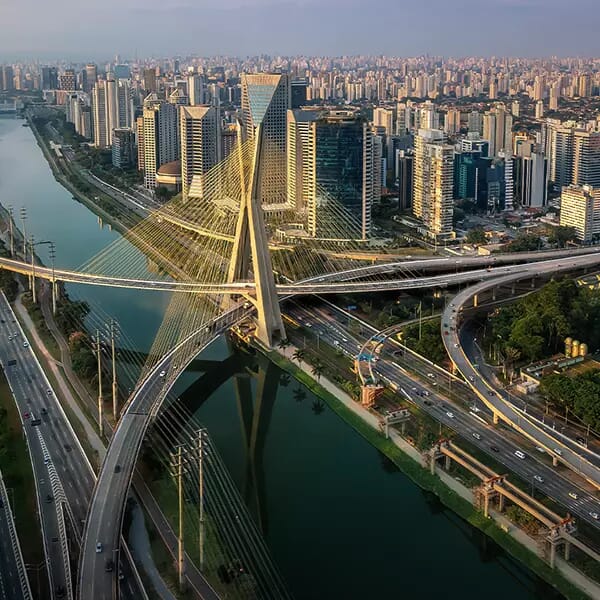 Pixabay
PixabayInfrastructure in Latin America: transparency and regulation
Corporate leaders and experts discuss the importance of the region consolidating regulatory frameworks and governance.
With an annual investment deficit estimated by the World Bank at more than $180 billion, Latin America's infrastructure industry is singled out as one of the potential destinations for global capital investments. According to data from the Latin American Development Bank (CAF, in the Spanish acronym), project opportunities on this market add up to $4.5 billion in the next ten years. However, to move toward the needed expansion of private sector participation, the region needs to consolidate points considered as crucial, such as regulatory frameworks, corporate governance, transparency, and risk allocation.
These factors were identified from interviews with experts and market players and are the subject of this second report of the ‘Infrastructure in Latin America’ series, produced by the GRI Hub team and started last week.
“There are two sides to investing in infrastructure. There is the project portfolio, engineering and operations, but there is also the regulatory framework. There is no point in doing one and not worrying about the other,” says Paulo Resende, coordinator of the Center for Logistics, Supply Chain, and Infrastructure at the Brazilian Fundação Dom Cabral (FDC).
"Whenever we look at [the industry], we see two major figures: The large investment needs versus a huge amount of capital, estimated at trillions of dollars, in search of investments. It must be recognized, however, that the fact that there are resources does not mean that they will be channeled into these particular investment alternatives,” says Joísa Dutra, director of the Infrastructure Regulation Center (Brazilian Fundação Getúlio Vargas/Ceri) and former head of the National Electric Energy Agency (Aneel), in an analysis of the Brazilian scenario.
“From the investment point of view, [infrastructure] is an asset that needs to compete for attention, compete for this attraction. The investor, when looking at this asset, sees not only a work, but several elements, such as the legal and regulatory framework in which it is inserted,” continues the expert.
In this context, Joísa makes a parallel between Brazil and Mexico. Although the countries have elected governments of totally opposite political orientations, she warns that the two leaders come at a time of great discomfort caused by recent corruption scandals.
“It is curious because the election of president [Andrés Manuel López] Obrador [AMLO] had the same characteristic. He is from another political orientation [versus Jair Bolsonaro’s], but there was great perception of corruption in Mexico, just as in Brazil,” she contextualizes.
Greater strictness and transparency
In recent years, the search for a robust model for the infrastructure industry – supported by consistent regulatory frameworks, combating and preventing corruption, and transparency – has intensified in Latin American countries and has become increasingly important in a period of great volatility and fiscal adjustments.
The theme was among the main agendas of the campaign that led López Obrador to the helm of the Mexican government. In his first speech, upon taking office, he reiterated this position, announcing that his administration would put an end to illicit acts. In February, AMLO signed an agreement with the United Nations Office for Project Services (Unops) to bring more transparency to public works contracts.
In Brazil, one of the first bills introduced by the Jair Bolsonaro administration was precisely the anticrime package, which includes tougher measures against corruption. Within the scope of the Federal Comptroller’s Office, the current management seeks to consolidate actions implemented in the previous administration.
“The country experienced a serious corruption crisis in recent years, wide open to the population. The way it took place makes it clear that we must have preventive mechanisms in place so that this does not happen again. Our great project today is to intensify the implementation of integrity programs with a focus on prevention and anticipation so we do not have to keep chasing the problems all the time,” said CGU head Wagner Rosário, in an interview with GRI Hub shortly before taking office.
In the same direction, Colombian president Iván Duque also introduced transparency measures and a new Financing Law that, among other points, brings tax benefits for infrastructure projects.
Duque also held the country’s first popular consultation on anti-corruption mechanisms. Although turnout was minimal, not having reached the necessary 12.1 million votes, this was the first time that citizens were called to this kind of scrutiny since the mechanism came into force, from the 1991 Constitution.
Acknowledgment and progress
“I believe that the regulatory issue is advancing in the region, whether because of the lessons learned or by means of the application of regional best practices. We have seen important progress in amendments being made to laws [aimed at concessions or public-private partnerships]. In this context, Latin America is capturing what the market is asking for,” says Federico Villalobos, a member of the Financial Advisory and Infrastructure Department of Deloitte Costa Rica and a specialist in PPPs in Latin America.
In fact, companies operating in the region recognize that most countries are looking to do their homework. "In general, we believe that Latin America is an investment destination and has strong institutions that are implementing measures to ensure investment security, compliance with contracts, and that contractual conditions are respected throughout the projects’ useful lives,” said Bernardo Serafim, head for Latin America Development at Vinci Concessions and managing director of the group for Colombia.
“Though there are some challenges due to corruption cases [identified in recent years] all over Latin America, we believe the legal actions taken by some governments will certainly lead to the promotion of better practices and fair tender processes in the future," adds Agathe Vigne, Business Development manager at Egis Projects for Latin America.
However, smaller nations, such as Argentina or Venezuela, are still considered quite unsafe. “They raise doubts about their governments’ ability to respect and comply with their contractual obligations,” notes Serafim.
Challenges on the way
To Agathe Vigne, in the current scenario one of the issues to improve is better coordination among the different entities involved, which would allow the processes to be more efficient and faster.
Joísa Dutra corroborates this view. “There is always a challenge to be faced between designing a legal and regulatory framework and its actual implementation. Difficulties arise along the way.” For example, she cites the Brazilian State-Owned Company Act (13,303/2016), which provides for the corporate governance of government-owned and subnational companies. “We had the two-year transitional period and, no matter how much commitment there was, there is still a lot to be done with regard to the implementation of this measure.”
By Estela Takada
Infra Latin America GRI 2019

Latin American challenges and how to overcome gaps for infrastructure development in the region are topics of the Infra Latin America GRI, scheduled for May 16 and 17 at The Roosevelt Hotel, in New York.
The 4th edition of the event brings more than ten discussion rooms to address strategic topics, such as legal certainty, risk allocation, and guarantees specific to each country and also related to the region as a whole. To participate, go to the event’s website.



